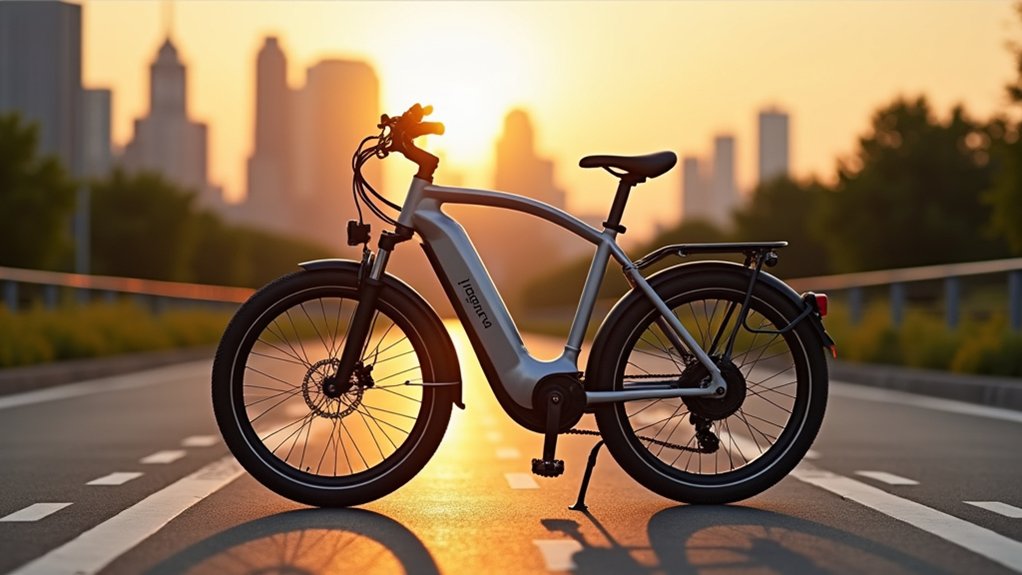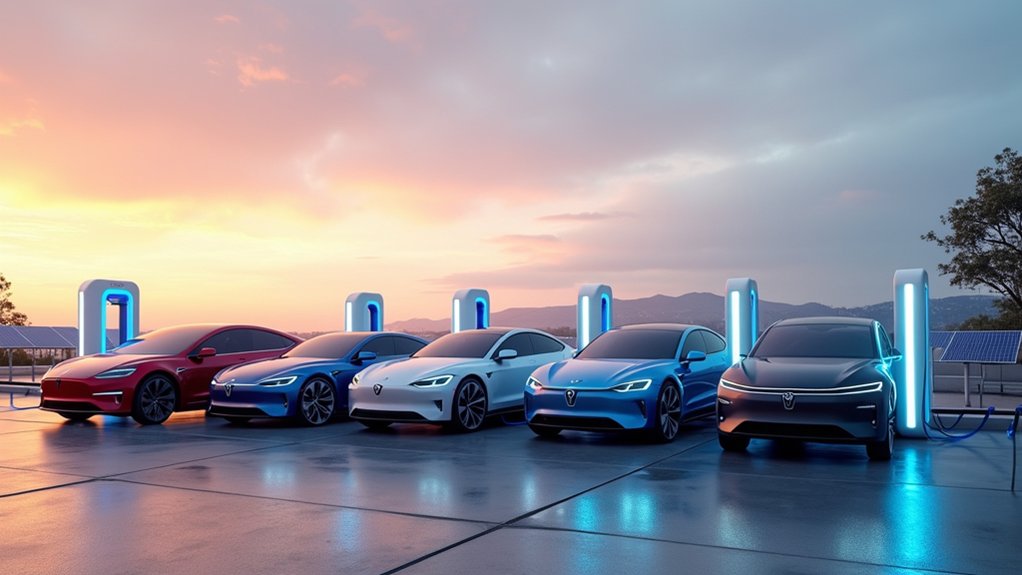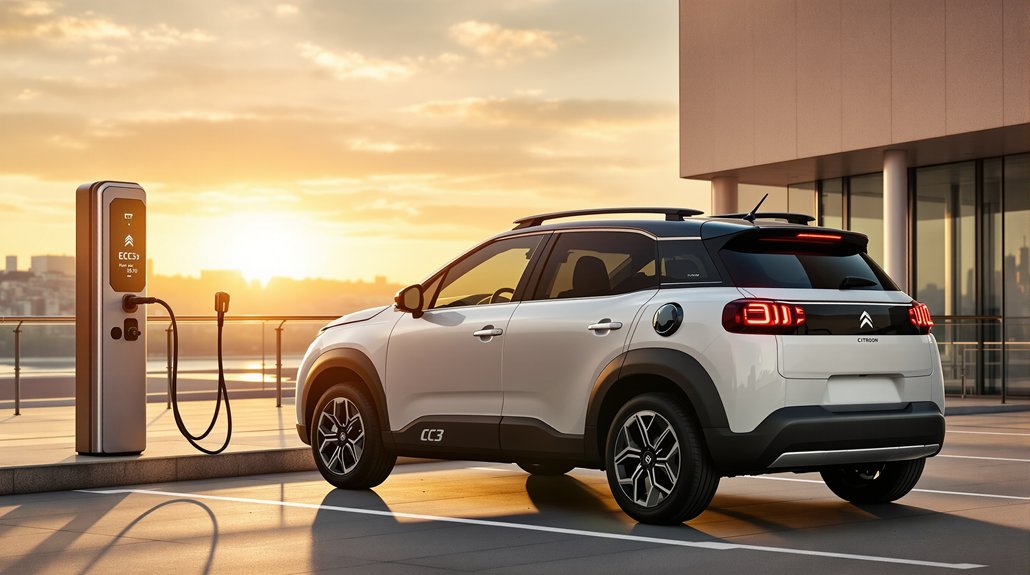The e-bike market shows remarkable growth, projected to reach $71.5B by 2030 with a 6.6% CAGR. These electric-assisted bicycles offer significant environmental benefits by reducing urban carbon emissions while providing cost-effective transportation with operating costs lower than conventional vehicles. Health benefits include accessible physical activity for various fitness levels, particularly benefiting elderly and differently-abled individuals. Despite supply chain challenges, the U.S. market demonstrates resilience, with e-bike adoption outpacing electric cars. The technology’s evolution continues to reshape urban mobility solutions.

As the global transportation landscape undergoes a dramatic shift toward sustainable alternatives, electric bicycles have emerged as a transformative force in urban mobility. The e-bike market‘s projected growth from $48.7B in 2024 to $71.5B by 2030, advancing at a CAGR of 6.6%, reflects their increasing prominence in contemporary transportation solutions. Government incentives, coupled with considerable technological improvements in motor efficiency and battery longevity, have accelerated adoption rates across major markets. The advanced 650W battery capacity segment is showing the fastest growth, particularly benefiting e-MTBs and e-Cargo bikes that require enhanced performance and range.
Major advancements in battery and motor technology over the past decade have made cycling more accessible to the general public. The environmental implications of e-bike adoption are substantial, particularly in urban settings where short car trips contribute greatly to carbon emissions. These vehicles represent an ideal balance between human-powered mobility and electric assistance, consuming minimal energy while delivering practical transportation utility.
The economic advantages are equally compelling, with operating costs remarkably lower than conventional vehicles and entry-level models available below $2,000, often supplemented by regional tax credits. The integration of smart features in modern e-bikes enhances their appeal to tech-savvy urban commuters.
Health benefits associated with e-bike usage extend beyond basic exercise, offering an accessible form of physical activity that accommodates various fitness levels. The electric assist feature enables riders to tackle challenging terrains while maintaining comfortable exertion levels, making cycling viable for demographics previously limited by physical constraints. This democratization of cycling has particularly benefited elderly and differently-abled individuals, expanding their mobility options greatly.
The industry faces certain headwinds, particularly in Europe where 2023 sales declined due to market oversaturation and economic pressures. Supply chain disruptions continue to impact manufacturing timelines, while initial purchase costs remain a consideration for potential adopters.
However, the sector’s resilience is evident in the U.S. market, where e-bike sales outpace electric car adoption. The integration of e-bikes into micro-mobility services and urban infrastructure development, including dedicated cycling lanes, suggests a sustainable growth trajectory.
Despite temporary market fluctuations, the fundamental value proposition of e-bikes – combining environmental responsibility, health benefits, and economic efficiency – positions them as an essential component in the evolution of urban transportation systems.
Frequently Asked Questions
How Long Does It Take to Fully Charge an E-Bike Battery?
E-bike battery charging time typically ranges from 3-8 hours, depending on several key factors.
A standard 48V 10Ah battery requires 5-6 hours with a 2A charger, while larger 15Ah batteries need 7-8 hours.
Fast chargers can cut these times in half but may impact battery longevity.
Environmental temperature, initial charge level, and charger specifications all influence the total charging duration.
Can I Ride an E-Bike in the Rain?
E-bikes can be safely ridden in light to moderate rain when equipped with proper IP-rated components (IP55 or higher).
Most quality e-bikes feature weather-resistant materials protecting electrical systems operating at safe low-voltage levels.
However, riders should avoid deep puddles and heavy downpours, as prolonged exposure can compromise electrical components.
Essential precautions include installing fenders, reducing speed, and thoroughly drying the bike post-ride to maintain peak performance.
Do I Need a License or Insurance to Ride an E-Bike?
Licensing and insurance requirements for e-bikes vary greatly by state.
Most states don’t require licenses for Class 1 and 2 e-bikes, while Class 3 models may need them. Insurance isn’t typically mandatory, though some riders opt for coverage.
States like Alaska mandate licenses and registration, while Arizona doesn’t.
The key determining factors are the e-bike’s classification, maximum speed, and motor wattage.
What’s the Average Lifespan of an E-Bike Motor?
E-bike motor longevity varies notably between types, with hub motors lasting 3-7 years and mid-drive motors extending to 5-10 years.
Quality mid-drive systems typically achieve 10,000-20,000 kilometers under normal conditions. Lifespan depends heavily on maintenance, riding conditions, and usage patterns.
Premium motors from established manufacturers tend to last longer, while budget options may require replacement sooner.
Regular servicing and proper riding habits can maximize motor durability.
How Far Can I Ride When the Battery Is Completely Depleted?
The distance rideable on a depleted e-bike varies considerably based on terrain and rider fitness.
On flat surfaces, riders can typically cover 10-15 miles through manual pedaling, though at reduced speeds.
Uphill sections become particularly challenging due to the added weight (40-50 pounds) of the motor and battery components.
Most e-bikes retain functional gearing systems, allowing riders to navigate moderate terrain, albeit with substantially more physical effort than conventional bicycles.










2 comments